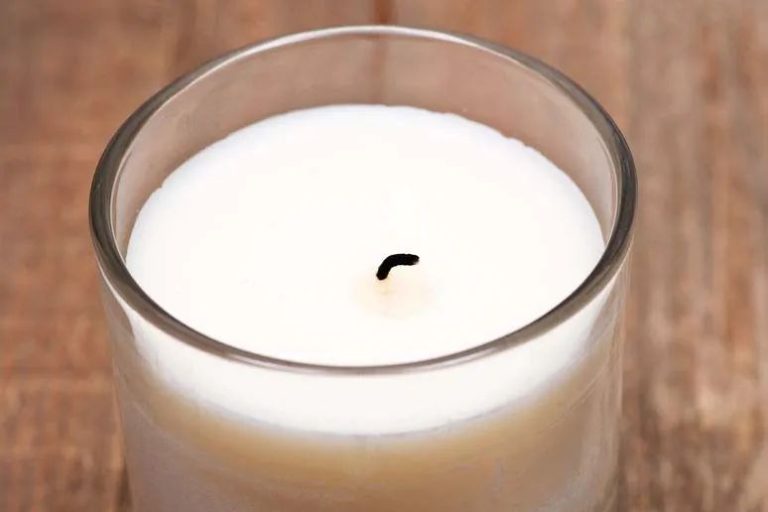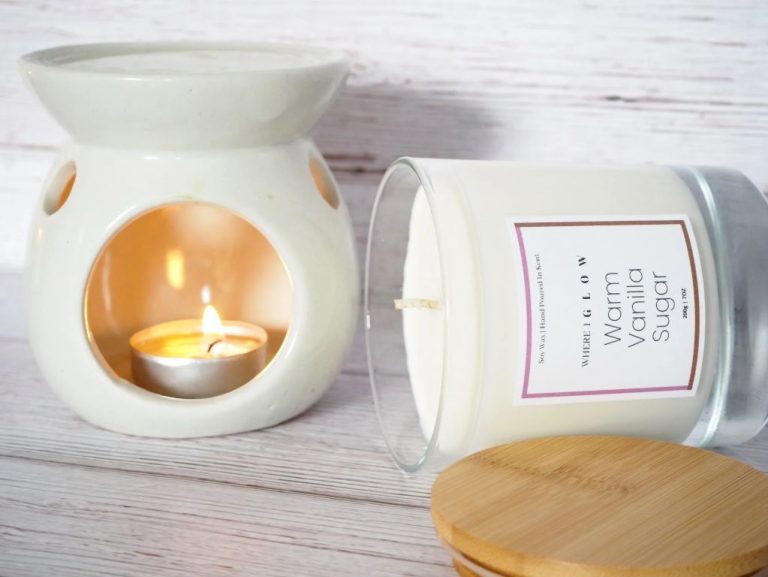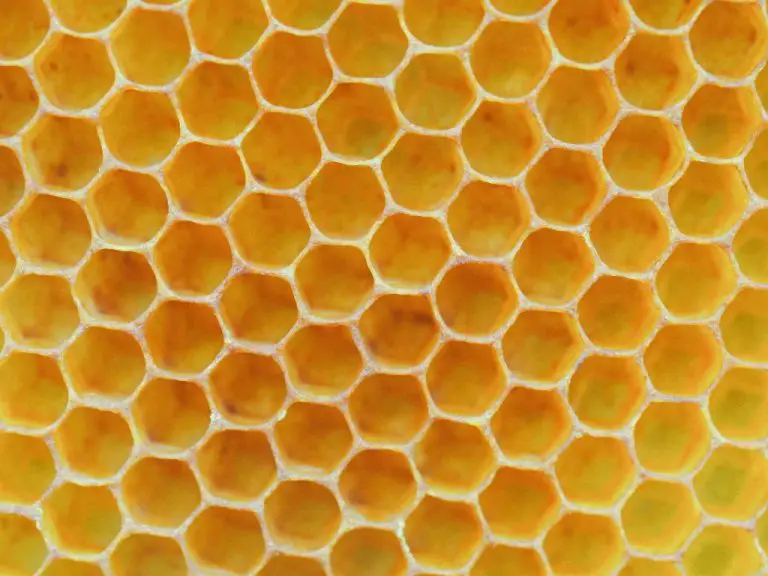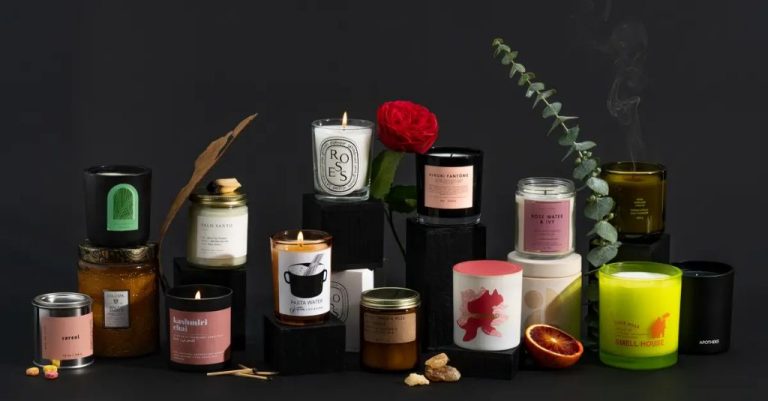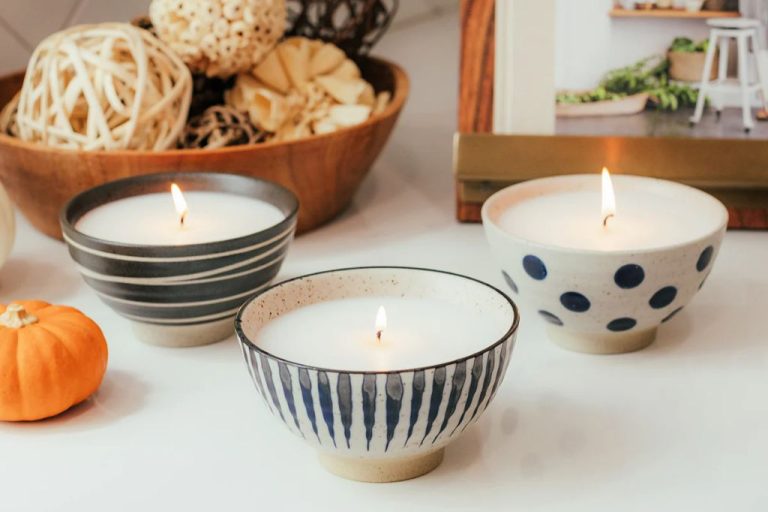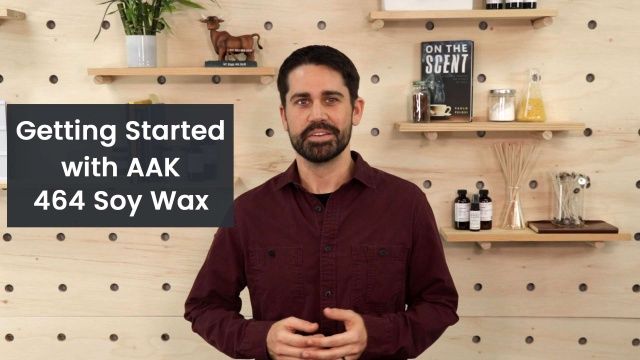What Can I Use In A Wax Melter?
What is a Wax Melter?
A wax melter is a device used to melt scented wax to scent and perfume an area or room of a home. It works by using a low-wattage heating element or candle to melt wax slowly and release fragrance into the air. Wax melters come in different styles but generally contain a small hot plate, bowl or basin to hold the wax, and openings on top to allow the scent to escape. They provide an alternative to burning candles and work by heating the wax just enough to liquefy it and disperse the fragrance, without having an open flame.
Wax melts, also called wax tarts, are put into the wax melter basin or container and heated either by the unit’s hot plate or by a tealight candle underneath. The wax heats up just enough to melt and release its fragrance, filling the room with pleasant scents and aromas. As the wax liquefies, the fragrant oils are released through the top vents and into the surrounding area through natural convection. Melters allow you to repeatedly melt the wax without lighting or blowing out a flame.
The key benefit of wax melters is that they provide fragrance from melting wax without burning a wick or flame. This reduces the fire hazards of burning candles. Wax melters only heat the wax enough to distribute fragrance and allow the wax to be reused. They are an easy, effective way to scent any room (Wikipedia).
Basic Wax Melts
There are three main types of wax commonly used in wax melts:
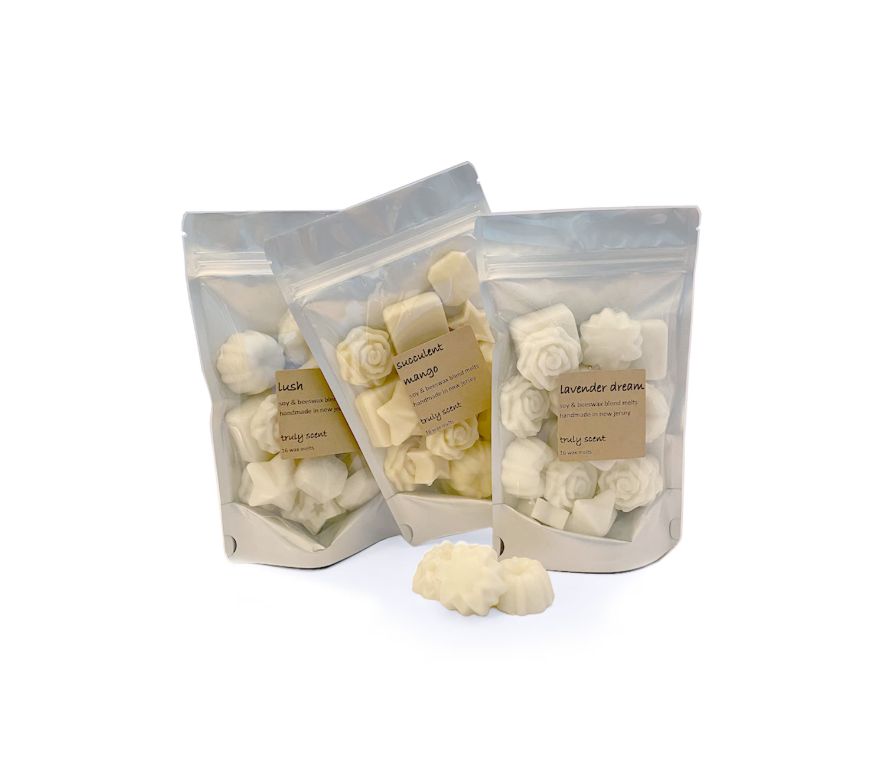
Soy Wax
Soy wax is made from soybean oil. It is a natural, renewable resource. Soy wax melts cleanly without leaving residue behind. It’s also biodegradable and environmentally friendly. The scent throw may not be as strong as other waxes. Sources: https://www.candlewarmers.com/fragrance/wax-melts/, https://www.sweetsofties.com/2021/12/wax-melts.html
Paraffin Wax
Paraffin wax is a petroleum byproduct. It is inexpensive and makes fragrance oils release their scents strongly. However, some find the scent too overpowering. It can also leave an oily residue behind. Sources: https://www.sweetsofties.com/2021/12/wax-melts.html, https://scentsandsassology.com/shop/wax-melts-lush-types
Beeswax
Beeswax is a natural wax made by honey bees. It has a sweet, honey-like scent when melted. Beeswax melts release scent slowly and steadily. However, it can be more expensive than other waxes. Sources: https://www.candlewarmers.com/fragrance/wax-melts/, https://www.sweetsofties.com/2021/12/wax-melts.html
Candles
One of the most common items used in wax melters is leftover candle wax. Rather than throwing away candles that have hardly been burned, you can break or cut them up into smaller pieces and add them to your wax melter. This helps reduce waste and lets you enjoy the scent again. [1]
Keep in mind that different types of candles have different melting points depending on their wax composition. Paraffin candles tend to have melting points between 115-150°F, while soy candles are around 115-125°F. Beeswax candles have a higher melting point around 140-170°F. You may need to adjust the temperature setting on your wax melter to fully melt different candle types. Test out small amounts first to find the right setting. [2]
The wax melter allows you to reuse and repurpose leftover candles that would normally go to waste. Just be sure to break up candles into smaller chunks before adding to the melter so they melt evenly. Adjust temperature as needed based on the wax type.
Essential Oils
Adding a few drops of essential oils to your wax melter can provide amazing aromatherapy benefits. The heat from the wax warmer helps diffuse the essential oils into the air so you can breathe in their lovely scents.
Some popular essential oils to use in wax melters are lavender, eucalyptus, peppermint, and lemon. Lavender promotes relaxation, eucalyptus clears sinuses, peppermint energizes, and lemon uplifts mood.
It’s important to properly dilute essential oils before adding them to your wax melter. A good rule of thumb is to mix 3-5 drops of essential oil per ounce of melted wax or water. Adding oils directly to the melter can be dangerous as the heating element makes direct contact with the oil.
Diluting the essential oils helps prevent irritating your eyes and nostrils. It also helps the oils diffuse evenly into the air for a pleasant aroma throughout the room.
If you don’t have wax or water on hand, you can place 3-5 drops of oil onto a cotton ball and set that on top of the melter instead. This allows for safe diffusion of the aroma.
Enjoy experimenting with different essential oil blends in your wax warmer. Just remember to always dilute first for safety and best results.
Dried Flowers and Herbs
Dried flowers and herbs are a popular item to use in wax melters. The drying process removes the moisture from fresh flowers and herbs, allowing them to be safely added to melted wax without causing splattering or fires.
Some of the most commonly used dried flowers and herbs in wax melts are:
- Lavender – Known for its relaxing, calming fragrance.
- Rose – Provides a light, floral scent.
- Chamomile – Has a mild, soothing aroma.
- Mint – Gives a refreshing, invigorating scent.
- Lemongrass – Offers a bright, citrusy fragrance.
Dried flowers and herbs allow for customization and experimentation with scents. The drying process concentrates the oils and fragrance. Using dried botanicals versus fresh prevents excess moisture from spoiling the melted wax.
When working with dried flowers and herbs, it’s best to use a light hand. Start with small amounts, adding more until the desired fragrance is achieved. Too much plant matter can clog the wax melter or become overpowering.
Fruits and Spices
Popular fruits and spices like lemon, orange, apple, cinnamon, and clove can be used in wax melters. You can add slices of fresh fruits, dried fruits, essential oils, or scented wax melts with fruit and spice fragrances.
Both fresh and dried fruits work well in wax melters. Slices of fresh fruits like lemon, orange, and apple will release nice aromas when heated. Dried fruits tend to be more concentrated in scent. Dried orange slices, apple chips, and lemon peel are common options. The drying process makes their oils more potent.
Popular spice options are cinnamon sticks and whole cloves. Their woody, warming scents are released when heated. You can also find scented wax melts with cinnamon and clove fragrances. For a custom blend, orange essential oil combines nicely with cinnamon or clove.
Some popular scented wax melt blends are: apple cinnamon, orange clove, lemon lavender, and spiced cranberry. Shop for scents you enjoy and avoid heavily artificial or overly sweet options. High quality wax with natural ingredients will provide better aroma.
Sources:
https://www.etsy.com/market/fruit_wax_melts
https://aembr.co/products/leaves-wax-melts
Wood
Certain types of wood can be safely used in wax melters. Soft, porous woods like pine, cedar, and basswood work well because they absorb the wax and distribute fragrance effectively. Harder woods like oak and walnut can also be used but may require scoring or sanding to increase their porosity. Some commonly used woods include:
- Basswood – A soft, light wood that warms well and absorbs fragrance.
- Cedar – Has a nice natural aroma and its soft texture makes it ideal for melting wax.
- Pine – Soft and porous but avoid sap-rich varieties which can crackle and pop when heated.
- Oak – Can be used if lightly sanded first to create texture for wax to pool in.
Avoid using woods like redwood, cherry, and maple which are prone to cracking when heated. Also avoid painted or treated woods as the chemicals can release toxic fumes. Opt for natural, unfinished woods that are known safe for burning to get the best results.
As cited from 1803candles.com, wood wax warmers should be periodically cleaned by wiping with a dry cloth to remove any wax residue.
Crafting Materials
Crafting materials like glitter, sequins, confetti, and more can add visual interest to your melted wax. However, take care when adding these as they can be flammable if they get too hot. According to https://makesy.com/products/wax-melter-27-liter, only add a small amount of glitter or other craft materials at a time, mixing well to avoid clumping near the heating element. Keep a close eye to ensure they don’t get too hot. Consider using heat-resistant materials like mica powder instead.
Sequins and confetti may sink in the wax as it cools and hardens, so stir frequently if you want them suspended throughout. Glitter tends to float on top nicely for a shimmery effect. Just use sparingly, as too much glitter can clog wicks when you make candles. Craft mesh, burlap, or paper can be laid in the melted wax for texture once hardened. Get creative with colors and materials, but stay cautious of flammability.
Pro Tips for Melting
When melting wax for your wax melter, temperature control is key. The ideal temperature range is between 185-200°F. Any hotter and you risk burning or discoloring the wax. Be sure to use a thermometer to monitor the temperature and adjust your heat source as needed. Most waxes melt best on low to medium heat. Take your time and avoid rushing the melting process.
For easy cleanup, line your melting container with parchment paper or aluminum foil. This prevents any wax from sticking, and allows you to easily dispose of the liner when finished. It’s also wise to reserve specific equipment just for melting wax to prevent cross-contamination of scents.
Properly store any leftover melted wax in an airtight container or by floating a layer of water on top to seal it. This prevents the wax from oxidizing and losing its fragrance. Remelting wax multiple times can diminish its quality, so avoid overheating it. When reheating solidified wax, use a double boiler or low heat to gently melt it again.
If you notice your wax not melting properly, there are a few tricks to troubleshoot. Make sure your heat source is working properly and generating enough heat. Chop wax into smaller pieces before melting for more efficient melting. Stir frequently and be patient. Switch to an alternate melting method like a double boiler if needed. Adding a small amount of oil to the wax can also improve meltability in some cases.
Safety Precautions
Using a wax melter safely involves being aware of potential fire hazards and taking steps to prevent accidents. Always place your wax melter on a stable, flat surface away from anything flammable. Keep the melter out of reach from children and pets when in use, as the wax and unit can get extremely hot (AirPure, 2021).
Proper ventilation is also key. When melting wax, vapors are released into the air which can trigger respiratory irritation for some. Make sure to keep windows open and run exhaust fans if needed. Never leave a melter unattended or sleep with one on (DevonWick, 2021).
Signs you may have a ventilation issue include strong wax smells, excessive wax residue/oil buildup around the melter, or respiratory discomfort. Pay attention to these warning signs. Overall, use common sense – keep flammable objects away from the melter, don’t overload it with wax, and turn it off when not in use.

